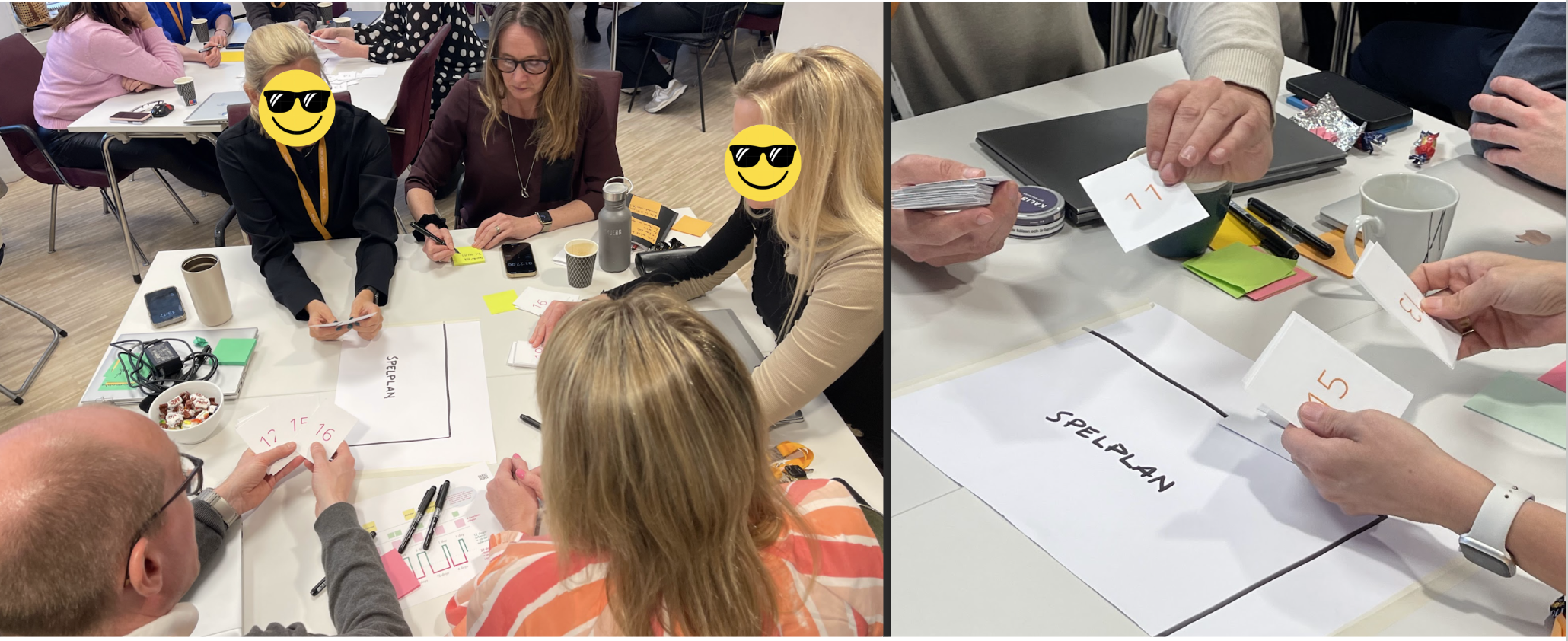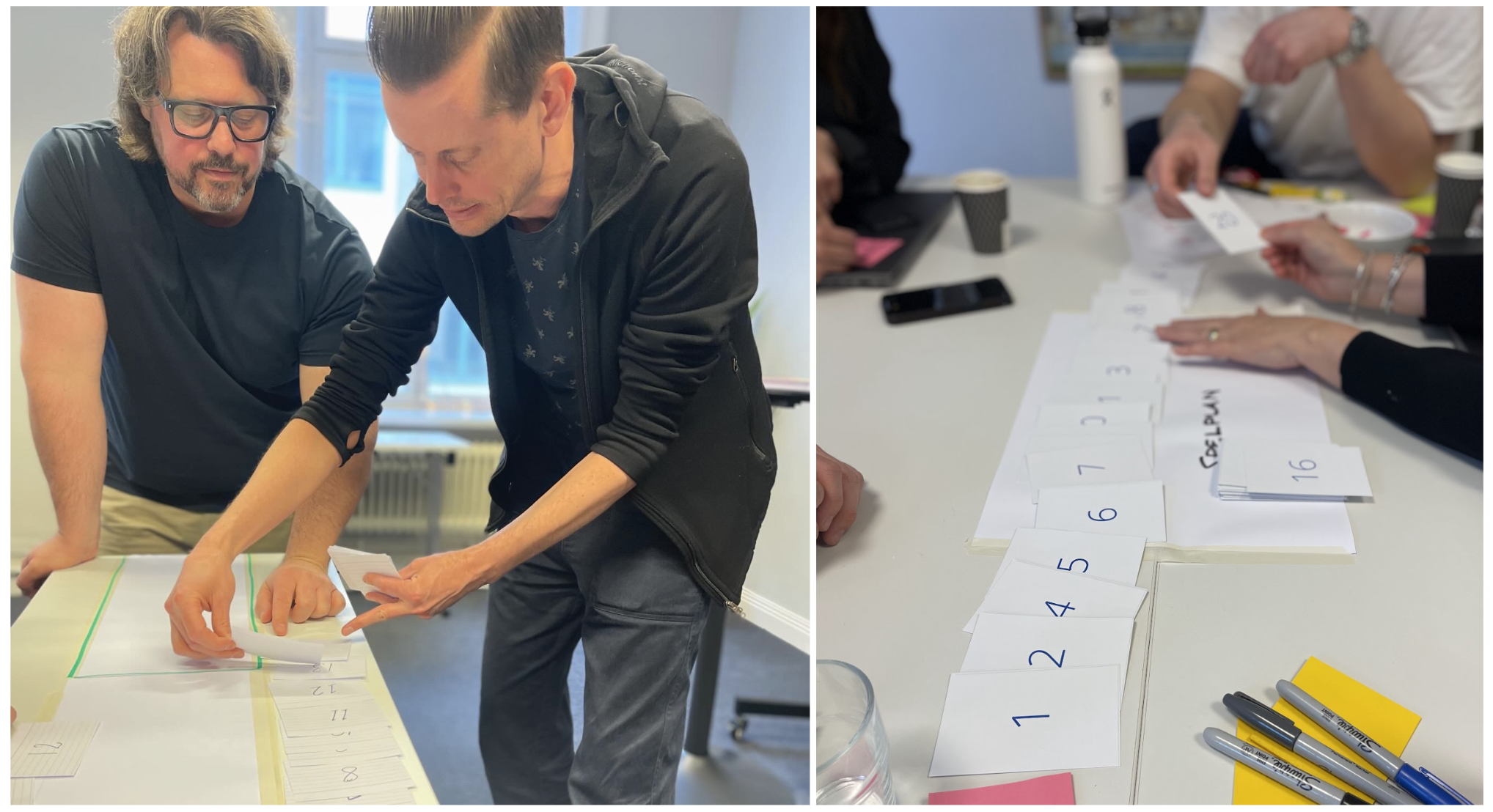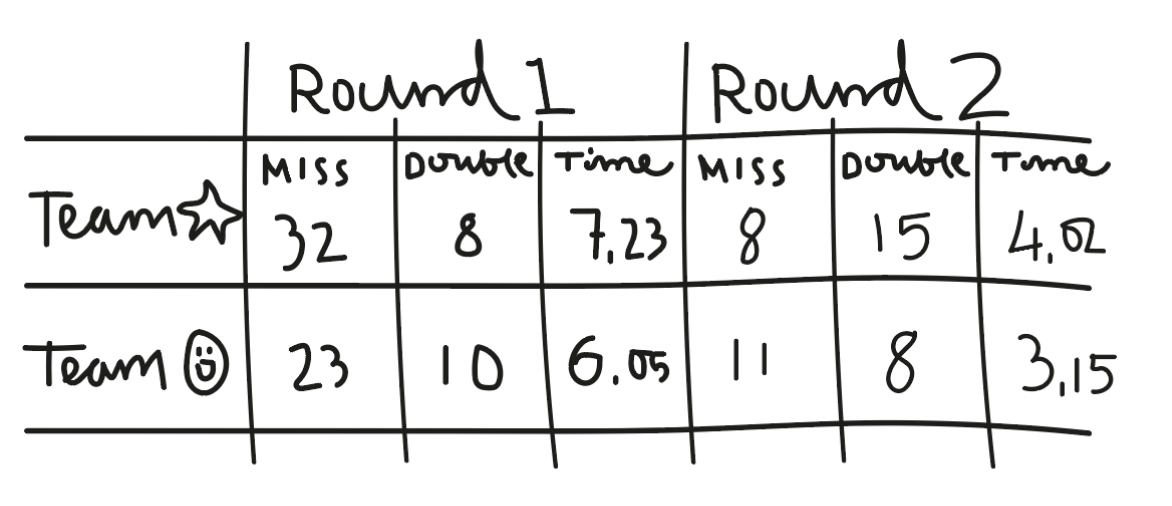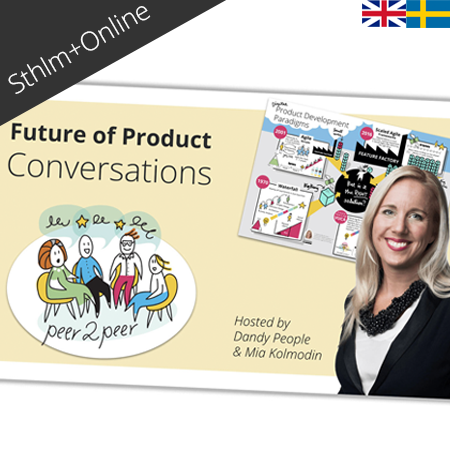This experience based exercise is designed to help participants understand the value of continuous rebuild to avoid creating technical- or user experience debt.
At Dandy People we use a lot of Experience Based Games, so called Serious Games, and Simulations to enable quick learnings. We have created many different ones that you can find within this category (same as this post) here on our blog.
This specific game that we present here is created to enable critical understanding of the value of continous rebuild to not build technical, and other, debt. Debt does not only exists within code, but also within the user experience, therefore the parts of the customer experience also often need to be continously updated as new parts are added.
When transitioning to more agile, customer-focused ways of working, aiming to reduce lead times and increase customer and business value—commonly referred to as a product-led organization.
The game consists of two rounds and takes approximately 30 minutes to complete, excluding time for reflection and theoretical discussion.

The image above shows the team playing the game.
The team self-organizes how they want to approach the task. In the first round, they play based on the principle “What’s done is done”—but in the second round, they are allowed to continuously adjust the order of the piles. This simulates continuously improving what has already been done, such as code or design.
Preparation
- Print the cards with the numbers and cut them out.
- Use slightly thicker paper for easier handling, but avoid making it too thick.
- Each team needs:
- One deck of cards.
- One game board.
- Creating the Game Board
- Use thick marker lines to draw an area where the cards can be placed.
- Label the center with “Game Board.”
- Ensure the board is large enough to fit 5 cards wide and 2 cards tall. Avoid making it larger, as it will make the game too easy.

Facilitation Instructions
- Each team should have:
- One A3-sized game board.
- A shuffled pile of cards (1–50) with duplicates for numbers 1–15.
- Remove 4–6 cards from numbers 15 and above.
- A sheet of paper to record errors and duplicates.
- Game Rounds
- Round 1: 7–10 minutes.
- Round 2: 3–5 minutes.
(The duration may vary depending on how meticulous the teams are. Feel free to emphasize deadlines and create urgency by mentioning time constraints or relatable scenarios, such as “the budget is running out.”)
- Recording Results
After each round, record the number of errors, duplicates, and completion times for each team on a shared board.
Instructions for Round 1
Objective: Deliver a sorted pile of cards in ascending order.
- Work in teams of developers with one person acting as the customer (timekeeper).
- Draw one card at a time from the pile and place it on the game board.
- You are not allowed to rearrange the piles—“what’s done is done!”
- Remove duplicates as they appear.
- Each team’s timekeeper (the customer) also counts errors.
- You have 3 minutes! (This is to create stress. Time continues to run until the task is complete, so ensure participants are aware of this to avoid stopping prematurely.)
Instructions for Round 2
- The same as Round 1, but now you are allowed to reorganize the piles continuously if needed.
Reflection Afterwards
- What happened to the number of errors between the first and second rounds?
- Why did we achieve better results in the second round?
- Why does it go faster even though we’re not only doing “new” work but also rebuilding the old?
- What happens to quality in the long term if we cut corners to meet deadlines but don’t take time to rebuild?
- What happens to lead times?
- How did you work in the first round versus the second round? Did everyone participate in all tasks, or were roles and responsibilities separated?
- How does this relate to your real-world experience? Where do you see debt today—technical, usability, business model, or processes?
The Board Could Look Something Like This

Two downloads for playing the game
Download this facilitator instruction to keep it handy when running the game (PDF) >
Download the deck of Cards for printout >
Prototyping the game
We created the prototype of the game a few days before we needed to run it with our customer. Involving our Dandy colleagues is a great way to build something based on our shared expertise. It was fun also to test a few different versions comming up with this last one 🙂
Best of luck playing the game and moving towards a customer and product centric ways of working 🙂


